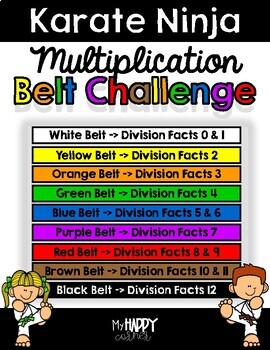Karate Ninja Multiplication and Division Belt Challenge (BUNDLE)
- Zip
What educators are saying
Description
Karate Ninja Multiplication and Division Belt Challenge is a product that guarantees great results for mastery in your classroom. Just like karate, multiplication facts and division facts (0-12) are split into different levels. Students are to practice their belts, and then take timed tests in an attempt to become masters. As they go from level to level, they get to sign their name on the "Wall of Fame" hence, a bulletin board display (example of mine is provided in the "How to Directions". Your student's goal is to reach the black belt meaning they can multiply and divide their facts from 0-12 without any help. Once, each goal is achieved a certificate can be redeemed.
Included in this product:
- OVER 360 pages of Resource available at your at finger tips!
- Decor / Bulletin Board Set
- Practice Belts
- How to Directions/Guide
- Letter to Parents
- Teacher Tracker Sheet
- Student Tracker Sheet
- Certificates
- Timed Tests
- Versions are available in Color or Black and White
If you use this product in your classroom, I'd love for you to share it on Instagram and tag ME :) so that I can see! Blessings!





